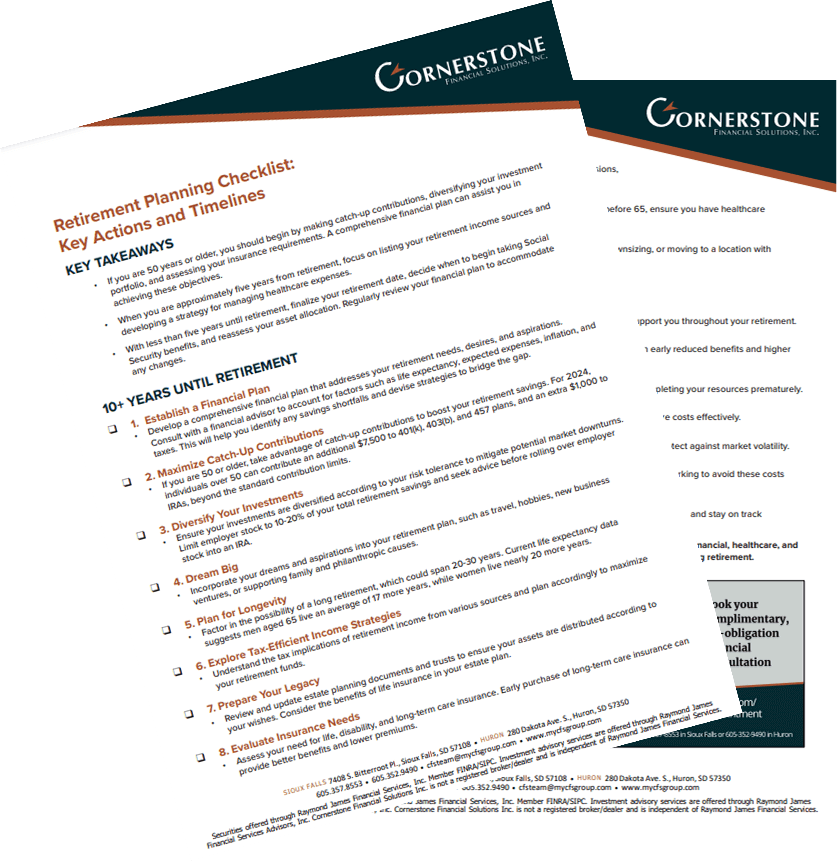Cornerstone is pleased to bring you this article by Ed Slott and Company, LLC. As a member of Ed Slott’s Elite IRA Advisor Group™ Gordon keeps Cornerstone professionals on the cutting-edge of retirement, tax law, and IRA distribution planning through continuous training with Ed Slott and his team of IRA Experts.
Membership includes immediate notification of changes to the tax code and updates on retirement planning, and 24/7 access to Ed Slott and Company, LLC to confer with on complex cases. Just one of the tools in the Cornerstone arsenal that helps you avoid unnecessary taxes and fees on your retirement dollars! As always, give us a call if you’d like to discuss!
BACKDOOR ROTH IRA BAGGAGE
A Backdoor Roth IRA strategy is when high-income earners – those over the Roth IRA income threshold ($230,000 – $240,000 for those married filing joint in 2024; $146,000 – $161,000 for single filers) – can make non-deductible contributions to a traditional IRA and then convert the traditional IRA to a Roth, thereby circumventing the income limitations. (We can expel the notion that this is a step transaction or that a Backdoor Roth IRA is on the precipice of illegality. In 2018, a tax law specialist with the IRS Tax-Exempt and Government Entities Division stated that Backdoor Roth IRAs will not be challenged by the IRS.)
You may have heard, “If your income is too high for a direct Roth IRA contribution, just do a Backdoor Roth.”
Easy-peasy, right? Maybe not.

A Backdoor Roth IRA transaction can carry a lot of “Backdoor baggage,” including:
1. The Pro-Rata Rule – No Cherry Picking. The pro-rata rule dictates that when an IRA contains both nondeductible (after-tax) and deductible (pre-tax) funds, each dollar withdrawn (or converted) from the IRA must contain a percentage of tax-free and taxable funds. This ratio is based on the percentage of after-tax dollars in all of a person’s traditional IRAs, SEP and SIMPLE plans. You can’t target just the after-tax IRA dollars and only convert those. Additionally, once you have after-tax dollars (basis) in your IRA, getting it cleaned out could require some heavy lifting. For example, the entire account could be converted, but that might be a tax hill too steep to climb. Or, the pre-tax dollars could be segregated by rolling them into a 401(k). But this assumes access to a 401(k) that allows a rollover into the plan.
2. Multiple Tax Forms.Every Backdoor Roth transaction creates three or four tax forms. When a non-deductible contribution is made to an IRA, you must declare that there are after-tax dollars in the account. This is done on IRS Form 8606. Failure to file Form 8606 could result in double taxation. When dollars leave a traditional IRA via conversion, a 1099-R is generated the following year. Form 5498 is also created the next year to document the conversion. And when tax time comes around, the same Form 8606 is used to document the pro-rata math and how much of the conversion is taxable.
3. Crossing Tax Years. What if you make a prior-year (2023) non-deductible IRA contribution in January 2024, but then immediately convert? That will require a Form 8606 for the 2023 tax return to claim the basis. The conversion will generate a 1099-R and 5498 (issued in 2025) for the 2024 tax return, and a second Form 8606 must be filed with the 2024 return documenting the pro-rata math. Four forms. (Yes, good tax software can certainly help.)
Be aware that, until the after-tax dollars are cleared out of a traditional IRA, it’s your (the taxpayer’s) responsibility to track the basis. And, if you’re a high earner who continues to make (and convert) non-deductible contributions each year, the annual baggage of a Backdoor Roth IRA can pile up and follow you like an overloaded luggage cart with a wobbly wheel.
By Andy Ives, CFP®
IRA Analyst, Ed Slott, LLC
This information, developed by an independent third party, has been obtained from sources considered to be reliable, but Raymond James Financial Services, Inc. does not guarantee that the foregoing material is accurate or complete. Changes in tax laws or regulations may occur at any time and could substantially impact your situation. Raymond James and its advisors do not offer tax or legal advice. You should discuss any tax or legal matters with the appropriate professional.
Copyright ©2024, Ed Slott and Company, LLC Reprinted from The Slott Report, January 31, 2024 with permission. https://www.irahelp.com/slottreport/how-do-youreport-2023-roth-ira-contributions-your-tax-return-answer-may-surprise-you-0. Ed Slott and Company, LLC takes no responsibility for the current accuracy of this article.
Raymond James is not affiliated and does not endorse Ed Slott and Company, LLC, The Slott Report, or Andy Ives.
Unless certain criteria are met, Roth IRA owners must be 59½ or older and have held the IRA for five years before tax-free withdrawals are permitted. Additionally, each converted amount may be subject to its own five-year holding period. Converting a traditional IRA into a Roth IRA has tax implications. Investors should consult a tax advisor before deciding to do a conversion.
CSP #Insights Newsletter 415437, Insights Newsletter Issue 2 Feb 2024, Exp. 4.2.25



